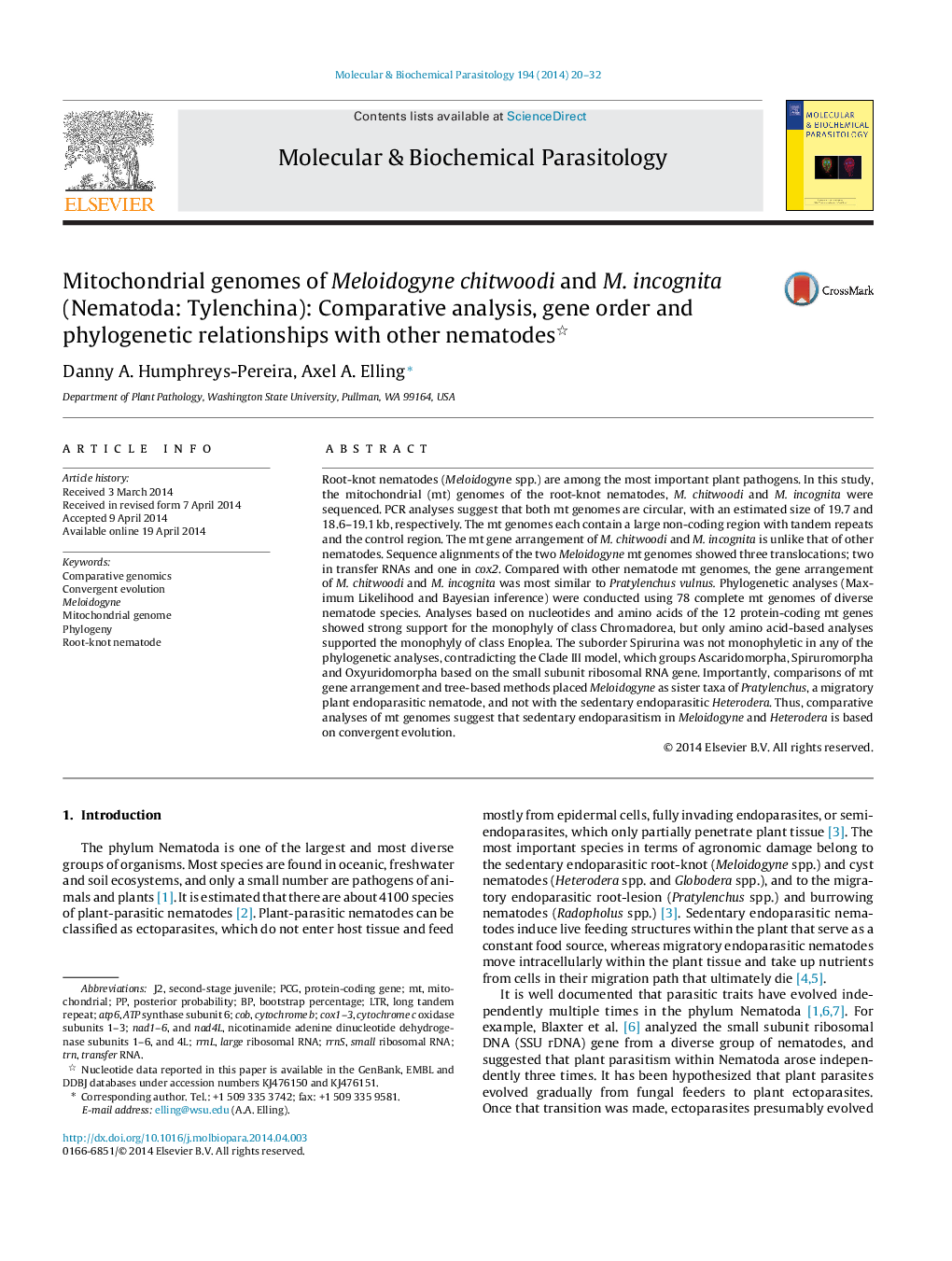| کد مقاله | کد نشریه | سال انتشار | مقاله انگلیسی | نسخه تمام متن |
|---|---|---|---|---|
| 2829779 | 1570651 | 2014 | 13 صفحه PDF | دانلود رایگان |

• Mitochondrial genomes of Meloidogyne chitwoodi and M. incognita are <20 kb.
• Large non-coding regions contain tandem repeats and control regions.
• The gene arrangement in both mt genomes is novel within the phylum Nematoda.
• Tree-based methods placed Meloidogyne with Pratylenchus.
• Phylogenies provide more evidence for convergent evolution of nematode plant parasitism.
Root-knot nematodes (Meloidogyne spp.) are among the most important plant pathogens. In this study, the mitochondrial (mt) genomes of the root-knot nematodes, M. chitwoodi and M. incognita were sequenced. PCR analyses suggest that both mt genomes are circular, with an estimated size of 19.7 and 18.6–19.1 kb, respectively. The mt genomes each contain a large non-coding region with tandem repeats and the control region. The mt gene arrangement of M. chitwoodi and M. incognita is unlike that of other nematodes. Sequence alignments of the two Meloidogyne mt genomes showed three translocations; two in transfer RNAs and one in cox2. Compared with other nematode mt genomes, the gene arrangement of M. chitwoodi and M. incognita was most similar to Pratylenchus vulnus. Phylogenetic analyses (Maximum Likelihood and Bayesian inference) were conducted using 78 complete mt genomes of diverse nematode species. Analyses based on nucleotides and amino acids of the 12 protein-coding mt genes showed strong support for the monophyly of class Chromadorea, but only amino acid-based analyses supported the monophyly of class Enoplea. The suborder Spirurina was not monophyletic in any of the phylogenetic analyses, contradicting the Clade III model, which groups Ascaridomorpha, Spiruromorpha and Oxyuridomorpha based on the small subunit ribosomal RNA gene. Importantly, comparisons of mt gene arrangement and tree-based methods placed Meloidogyne as sister taxa of Pratylenchus, a migratory plant endoparasitic nematode, and not with the sedentary endoparasitic Heterodera. Thus, comparative analyses of mt genomes suggest that sedentary endoparasitism in Meloidogyne and Heterodera is based on convergent evolution.
Figure optionsDownload high-quality image (238 K)Download as PowerPoint slide
Journal: Molecular and Biochemical Parasitology - Volume 194, Issues 1–2, March–April 2014, Pages 20–32